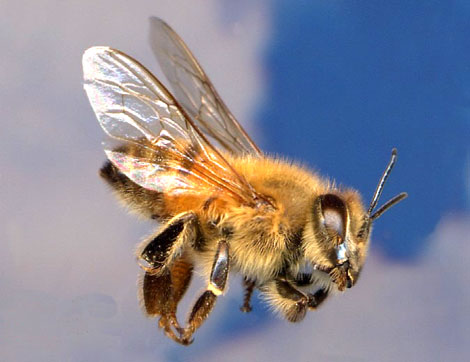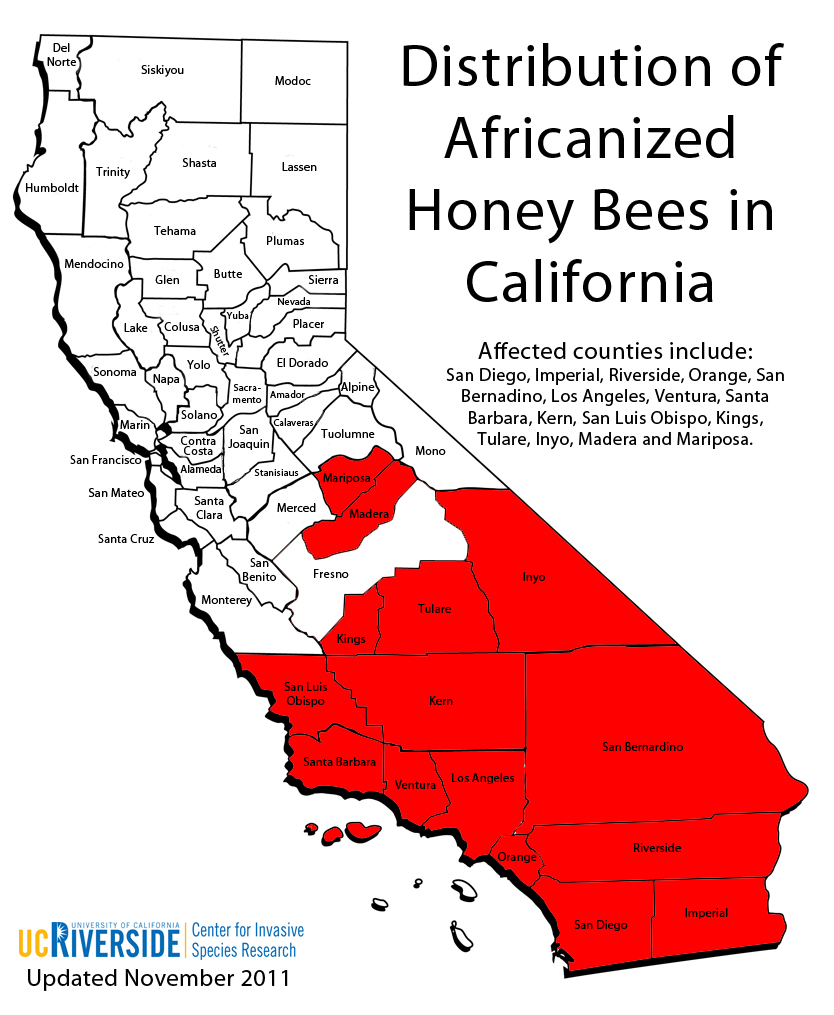Africanized Honey Bees
The County of Ventura does not have a program that responds to or controls bee swarms or nests. If you are concerned about the presence of a bee swarm or hive, contact a beekeeper, pest control company, or the, or the UC Cooperative Extension office.
The Africanized bee in the western hemisphere descended from 26 Tanzanian queen bees (A. m. scutellata) accidentally released in the southeast of Brazil from hives operated by biologist Warwick E. Kerr, who had interbred honey bees from Europe and southern Africa in the 1950s. Hives containing these particular queens were noted to be especially defensive. Kerr was attempting to breed a strain of bees that would be better adapted to tropical conditions (i.e., more productive) than the European bees used in South America and southern North America.
Unfortunately, following the accidental release, the African queens eventually mated with local drones, and their descendants have since spread throughout the Americas.
The Africanized hybrid bees have become the preferred type of bee for beekeeping in Central America and in tropical areas of South America because of improved productivity. However, in most areas, the Africanized hybrid is initially feared because it tends to retain certain behavioral traits from its African ancestors that make it less desirable for domestic beekeeping.
Specifically (as compared with the European bee types), the Africanized bee:
- Tends to swarm more frequently.
- Is more likely to migrate as part of a seasonal response to lowered food supply.
- Is more likely to “abscond”—the entire colony leaves the hive and relocates—in response to repeated intrusions by the beekeeper.
- Has greater defensiveness when in a resting swarm.
- Lives more often in ground cavities than the European types.
- Guards the hive aggressively, with a larger alarm zone around the hive.
- Has a higher proportion of “guard” bees within the hive.
- Deploys in greater numbers for defense and pursues perceived threats over much longer distances from the hive.
- Cannot survive extended periods of forage deprivation, preventing introduction into areas with harsh winters or extremely dry late summers.
For more information, please download the following fact sheet:
- Africanized Honey Bees – University of California



